Philip van Volsem on the VFX for The Claus family
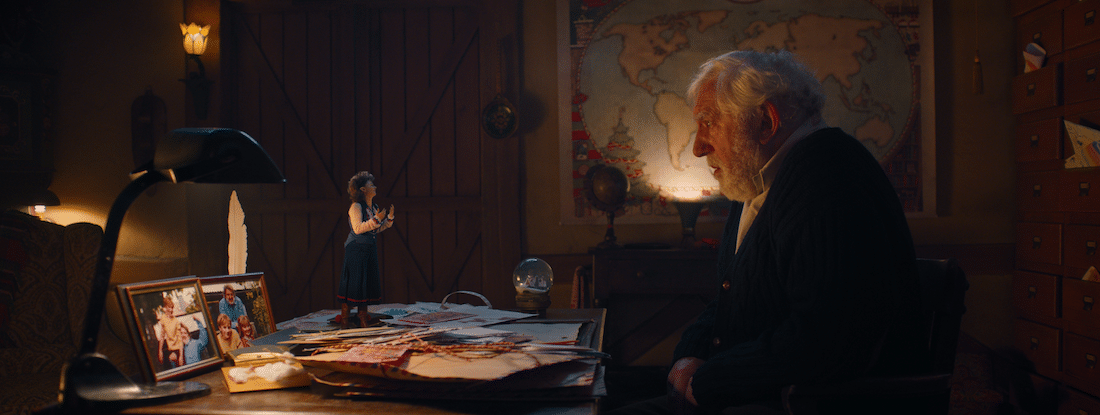
By Oliver Webb .
The Claus Family (De Familie Claus) films follow the festive adventures of Jules Claus as he prepares for the busiest time of the year. Umedia VFX provided The Claus Family with visual effects, helping to bring to life The North Pole and Santa’s cabin, as well as the ‘mini-humans,’ who serve as Santa’s helpers during the magical Christmas season. Stunningly captured in wintery hues by DP Philip van Volsem BSC (who has shot all three films) Claus Family 3 will be released in Belgium in December.
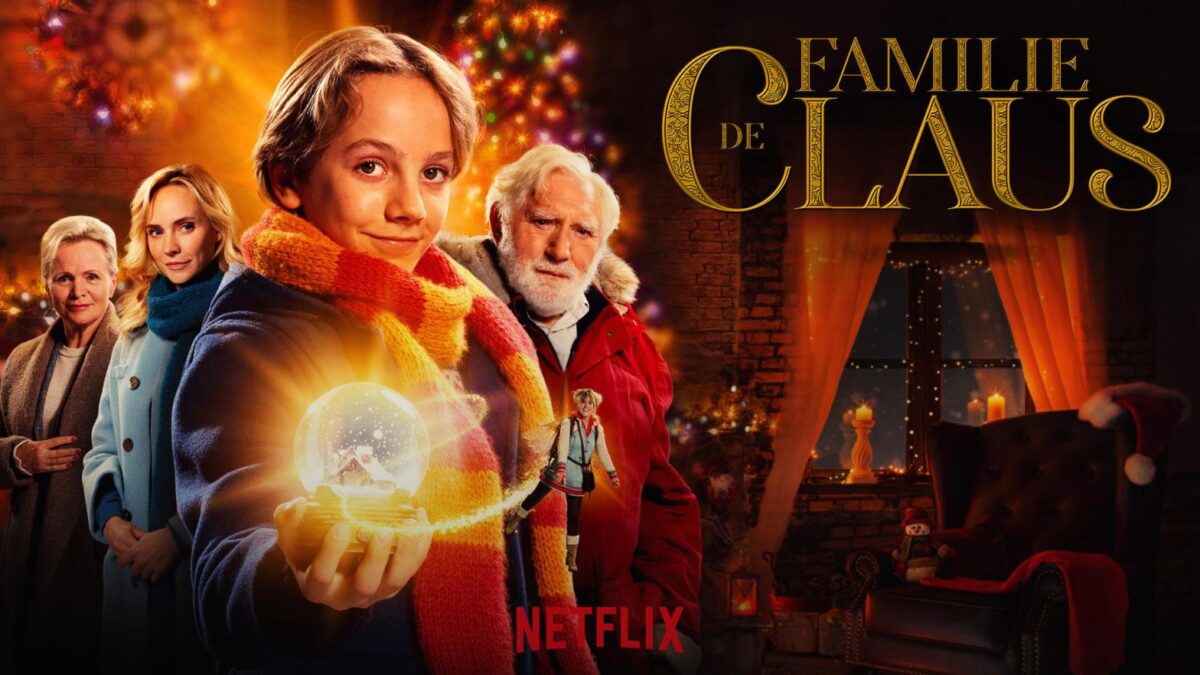
Could you tell me about your background in VFX?
None. Integrating VFX in film is something that you have to learn by doing it. When we see these big American movies with VFX, it’s a whole different ball game. It’s totally different here and I had to learn it the hard way. In general, if you have 30-40 real VFX shots, and I’m not talking about sky replacements or clean-ups, in a film, then it is a lot here in Belgium.
What were your initial conversations about the look of Claus Family?
Mireille Hoetelmans, my wife, is a well-known make-up artist. She was already booked on the show, scheduled for the beginning of May 2020. Then came Coronavirus and lockdown. The production company Dingie Media, run by two young, ambitious producers Anthony Van Biervelt and Ruben Vandenborre, had to shut down the film. At a certain point, after a couple of weeks, when the lockdown was less severe, production was having conversations about restarting the project again. The cameraman originally attached to the movie was already committed to another project due to the delay. Ruben Vandenborre, the producer and writer, approached me and asked me to shoot The Claus Family 1. I was glad to do so, I love genre films and in Belgium, I believe that Claus, was the first ever real Flemish Christmas movie. Due to the uncertainty of Corona, there was probably going to be an issue with the initial theatrical release in Belgium. Suddenly there was Netflix! They picked up the film with one restriction: delivery to be done by the end of September, ready for the Christmas holidays! The pressure was on!
I believe, there is one rule in Christmas movies and that is, that it has to be cold, blush outside and warm inside. That’s the connotation I have with winter and Christmas in general. If you look at any kind of Christmas movies it is about the same. It’s an unwritten rule the look and feel of a Christmas movie: it is blue and cold outside and it’s warm inside and people have to feel cosiness, the warmth of the fire place.
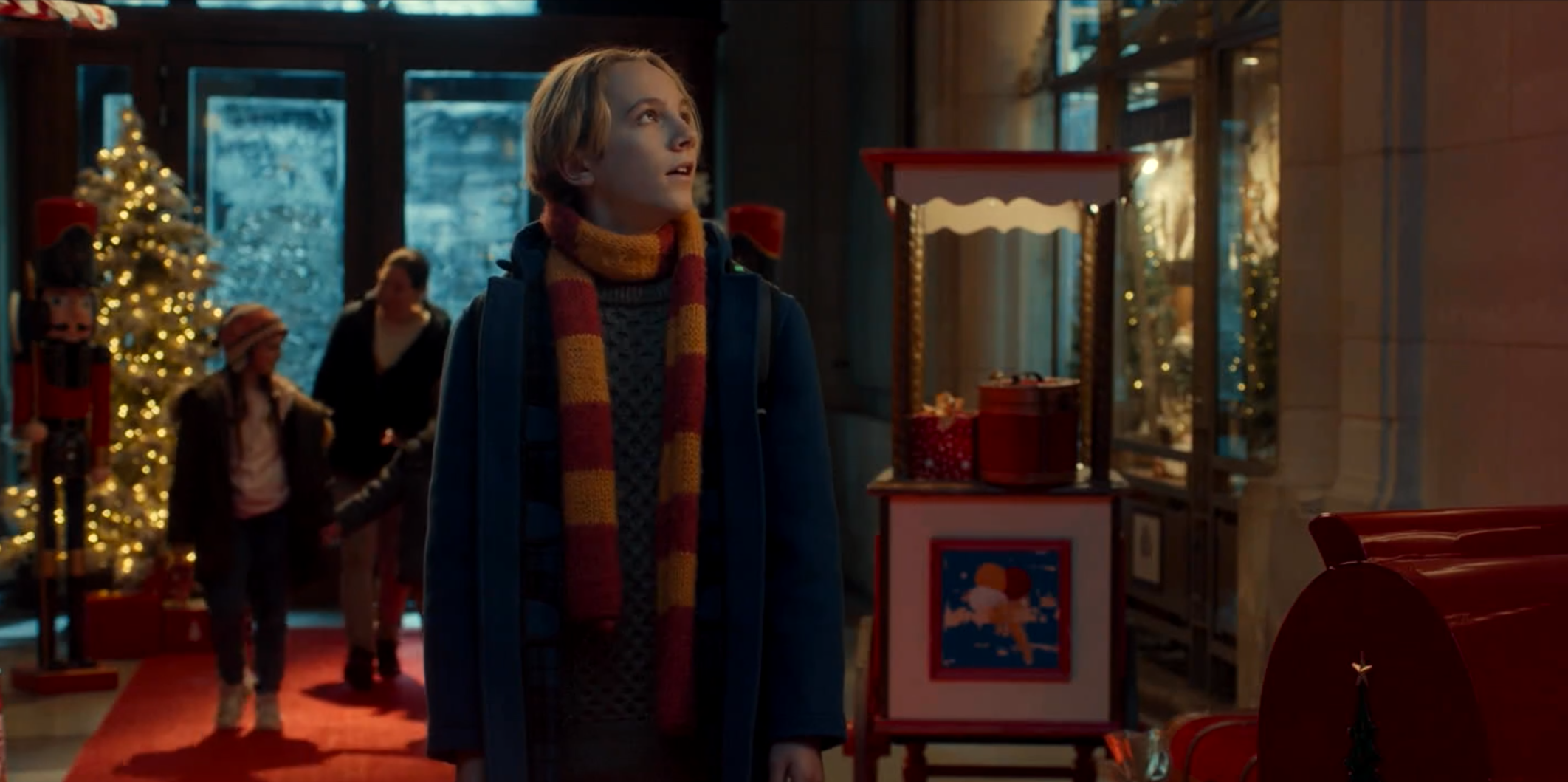
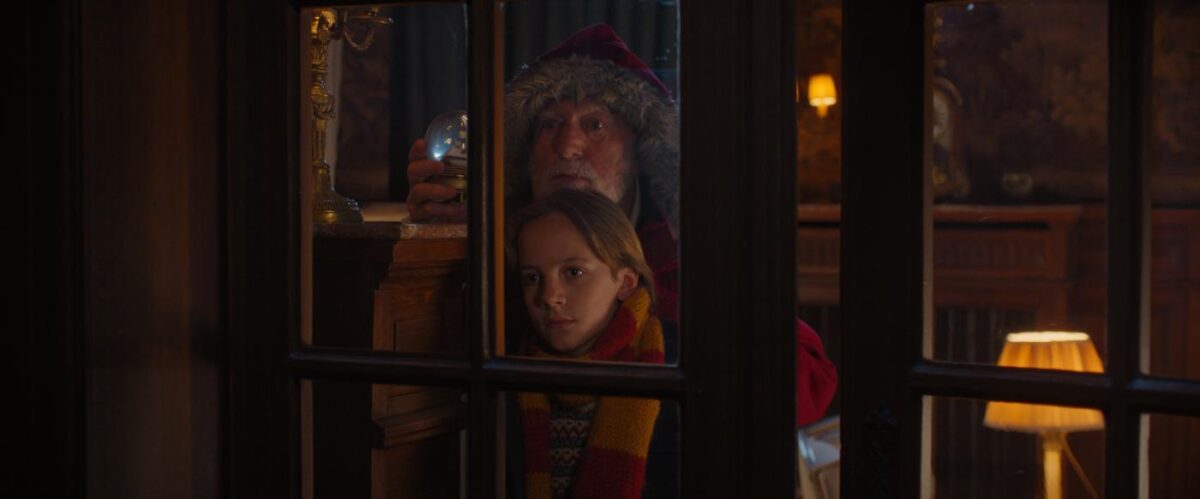
We shot in summer, so we had to make snow outside and also make it much darker, to give the film that winter feeling, that the daytime is short, cold and dark. In Belgium there is a production company called Studio 100 that mainly does movies and television series for children. Matthias Temmermans, the director has done quite a lot of work for them. He was the obvious choice to direct Claus since the film was about a boy who will become the next Santa.
Matthias and I went through all the locations in just two days. I didn’t have time to change a lot, so we went through his breakdown that he had made for almost every scene. The shot-list was very extensive. He has a certain way of organizing his scenes and shots. That certainly was not always the way I saw how this particular film should feel and what it should be shot like. I think that it is my duty as a cinematographer, to honour as much of the story as I can. We tried to find a way to make this work. Sometimes he had a hard time to understand the idea that the scenes should have a certain atmosphere, a mood, the way you line up shots, how you tell the story that will give the film its initial true Christmas feel. Both the producers, and later on Netflix, were happy with what I was trying to do. In the end, we managed to deliver a film that was very pleasing, good looking and original for a modest budget.
The film originally had 400 + VFX shots planned. That’s a lot of work in a short time frame. Initially the editor was also going to do all the VFX work. We quickly discovered that it was far too much work for one person alone. Production reached out to another VFX supervisor in Belgium, Stefan Rycken. He took on a part of it as it was also impossible for him to do everything. He chose to work together with U-Media VFX, a post-production house based in Brussels, with a lot of expertise in all kinds of VFX. We wrapped at end of July and had delivery scheduled for the end of September.
For the second film, we decided not to shoot all the VFX plates of the different scenes for that particular shooting day at the end of the day, as we did on the first film, which was more difficult than we thought, getting back into the same light and camera position. The extra VFX Plates were going to be shot after each shot or scene during the day. At least we would have the same light and know where everyone was going to be. We also needed more integration with the real actors, not making a single shot on the mini humans and then the reverse shot on the actor, with no over shoulder. We needed them both in the same shot. We also asked the VFX guys about camera movement, but it is difficult because we had no motion control. If you’re able to use motion control, you can do almost everything you want and then go back to the studio and put the real actors and repeat the movement. We told the VFX guys that Ruben Vandenborre (he stepped in as director for Claus 2 & 3) and I wanted to do some more movement involving the “mini-humans” together with the “real” actors. Of course, we were limited in how much tracking or camera movement you can do due to the complexity for VFX, but in the end with Claus2 and 3 we did more movements and you feel that the integration of the real actors and the mini humans is much more believable and real.
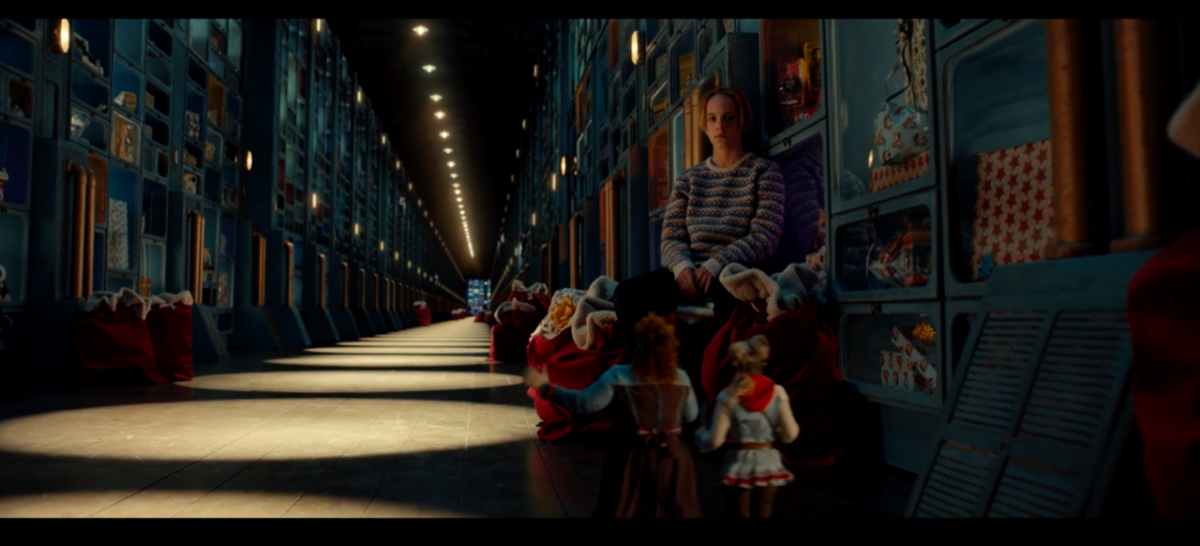
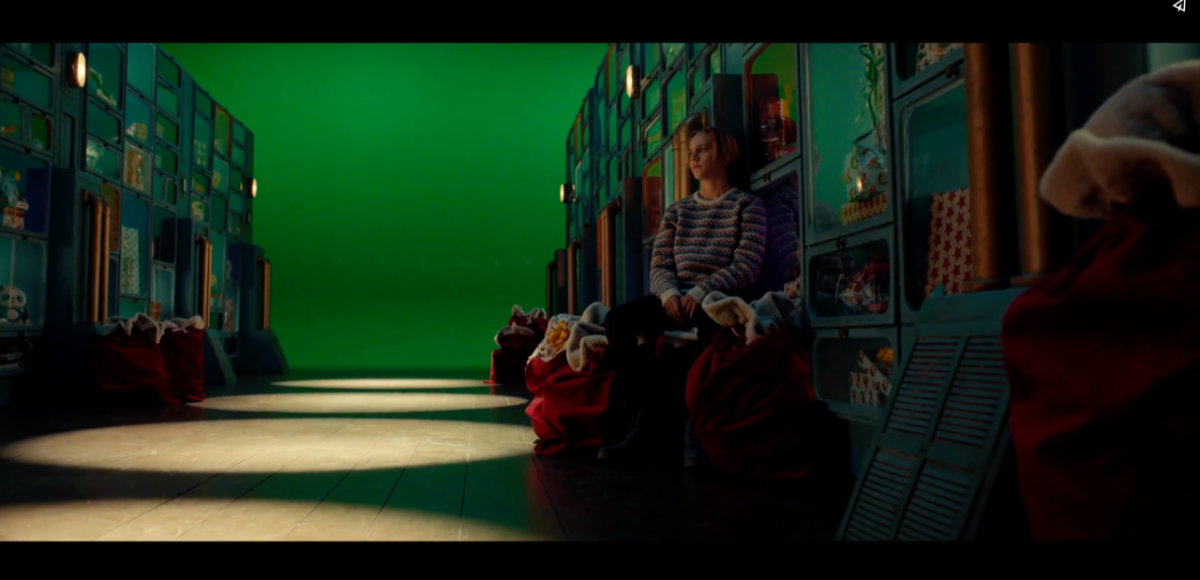
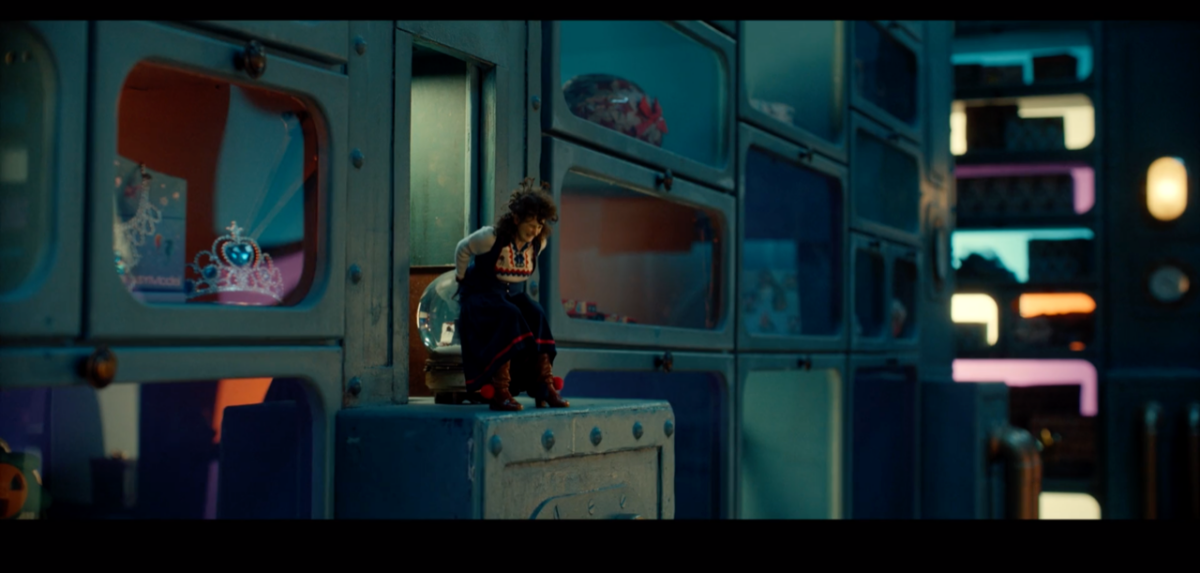
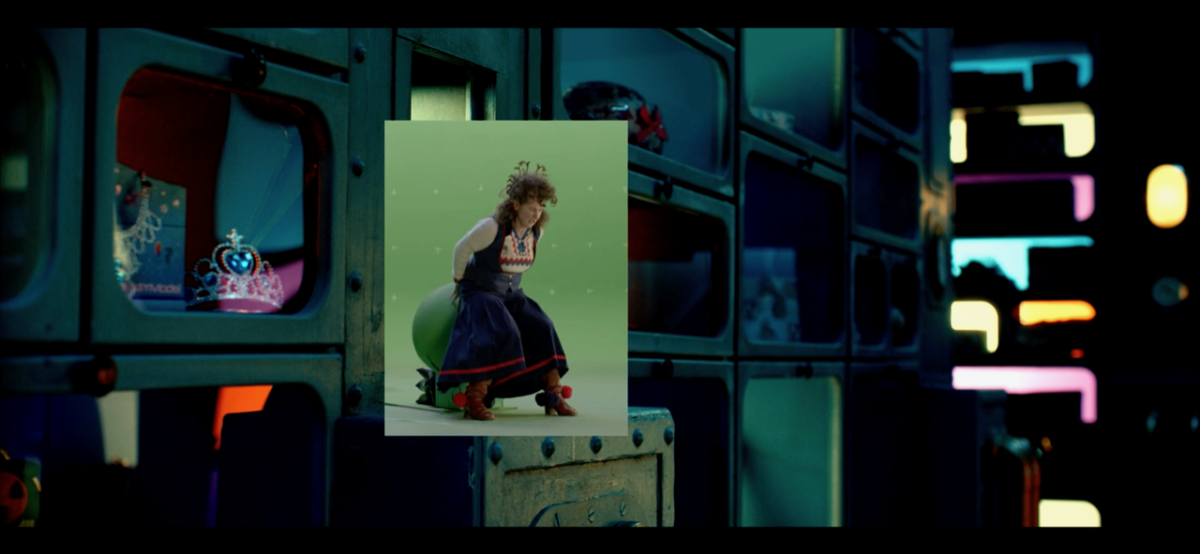
During the shopping mall scene in Claus Family 2, Gunna and Ikka disguise themselves as Rats. How was this scene captured?
The location is a museum in the centre of Brussels. It’s pretty small for a regular shopping mall. Claus has this style where you can’t pinpoint the period in which the film is happening but we still wanted the film to be modern. The style is a crossover between the 70s and 80s and even older. We were looking for a shopping mall that was a little more classical and stylish than modern shopping centres and with a crossover of art deco and art nouveau elements.
One of the major scenes for VFX was a scene involving two “mini-humans” trying to escape the owner of the mall, who thinks the “mini’s” are rats, as they’ve taken puppet- clothing from
a toy store. The mini’s have to run through the main floor, with extra’s around, hiding behind presents under a Christmas tree. They need to escape and find a boxed toy car, get in it and drive away with that toy car towards a doll house where they hide as part of the displayed barbies.We had to figure out where the car starts and stops, how to open the box, where it goes to (its path), the background action, what happens in the foreground and eventually do a typical shot on the hood of the car. As we make our shortlists, everything Ruben and I come up with involving VFX, we double check with Stefan Rycken, our VFX supervisor, if these ideas are doable or not. In general, almost everything can be done nowadays in VFX but not if you have a moderate budget. At that point you’ve got to be clever to be very inventive in order to spend you’re VFX budget to the max.
For the wide shot, where the toy car goes from right to left in the frame, the only restriction was to avoid the parallax. The more parallax, the more roto you have to do and at the same time you have to replicate that movement in the green key studio with our actors. Then, there is the shot with camera mounted on the hood. Since we are using a toy car, you can’t physically mount a camera on the hood. So, we made a construction so the dolly pulls the toy car and the camera is hanging in front of the car. You need to take care of how much you see in the background. These two characters have to be reacting to things that are happening around them. Doing the mini humans in the green screen studio is easier than doing the plates because with the plates you can’t change anything afterwards. We have a monitor for the actors because the actors who play the mini-humans never saw the other actors or the action. We show them the scene, which is precut prior to the green key scenes, to give them an idea what’s happening around them and what the interactions eventually would be.
When we shoot the plates, we use puppets as a reference, which are the same size as the “mini-humans”, for one take and then shoot the empty or clean plate. There are two reasons for this: editing is easier when the editor, Nico Poedts, doesn’t have to edit on an empty plate, and for VFX as a reference. At the same time, I have a good reference for light since these puppets are made from light coloured wood so I can easily see where the sources are. Sometimes we show on the green key set the integration, done by a video mixer, where we take away the green key and put them into the background plates, so they get a better of feeling of what they are doing and where they are.
What VFX software did you use?
If we shoot a plate, we measure everything; the height of the camera, the distance of the camera, the angle, the lens we use. All this info is logged by our second assistant, Thomas Vercauteren. We have to replicate all these parameters on the green key set, taking into account the reduction factor of 6.1 to 6.3. These calculations are made by our VFX supervisor, Stefan Rycken, put in an extensive list.
If you have the mini-humans in a wide shot, full frame, you should be more than 75m away in the green key studio and that’s not always possible and workable due to the size of the studio. So, we recalculated the height and distance again to be able to put the camera closer and keep the actors as close as possible to keep them in the best quality before we resized them in VFX to match the wide shot. (What we do, is we set up the camera as far away as we can trying to match the plate and the distance and height calculated. We have a look and thenwe go in closer and closer so we get them full frame in order to keep the quality as good as possible due to the reduction and VFX handling afterwards to get the best image quality). The camera angle is the most important thing in this case that has to be respected at all times.
Could you talk more about the ‘mini humans’ and how you integrated the lighting?
You have got to replicate the same light in the green key studio as you have in your practical location. In Santa’s cabin there is the fireplace and the fire is the main light source plus a little bit of backlight and side light, coming from practicals and windows. When the mini-humans are standing on the table there is also a table light that is always giving a hard side light. We knew we had to replicate that too, but you have to make it six times bigger, to make it believable in the studio. In the cabin the fire was made by six sky panels bounced into some white bounce. The sky panels are in fire light mode with different frequencies so the effect is more believable. Occasionally, we had real fire to augment the effect, especially in wider shots. I had to make this box almost six times larger by putting those six sky panels through a 6×4 grid cloth in order to get that surface and intensity. I try to replicate every time as exactly the same light as we’ve done a couple of weeks ago. It was something I’d never done on this scale before, but after three films I know now the trick how to do it. One thing I didn’t have to worry about was T-stop and colour temperature, since I shot the whole film on the same T-stop and colour temperature.
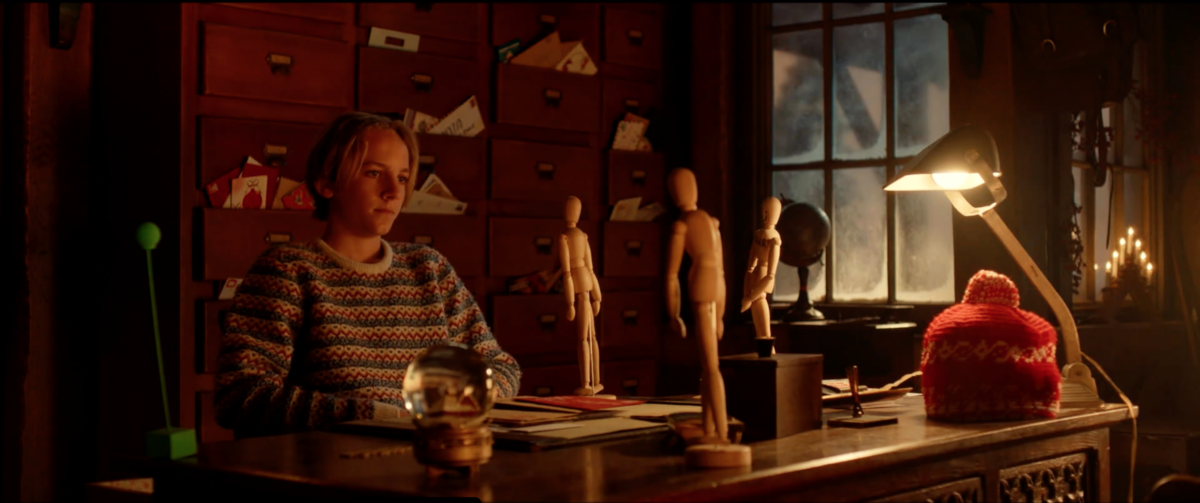
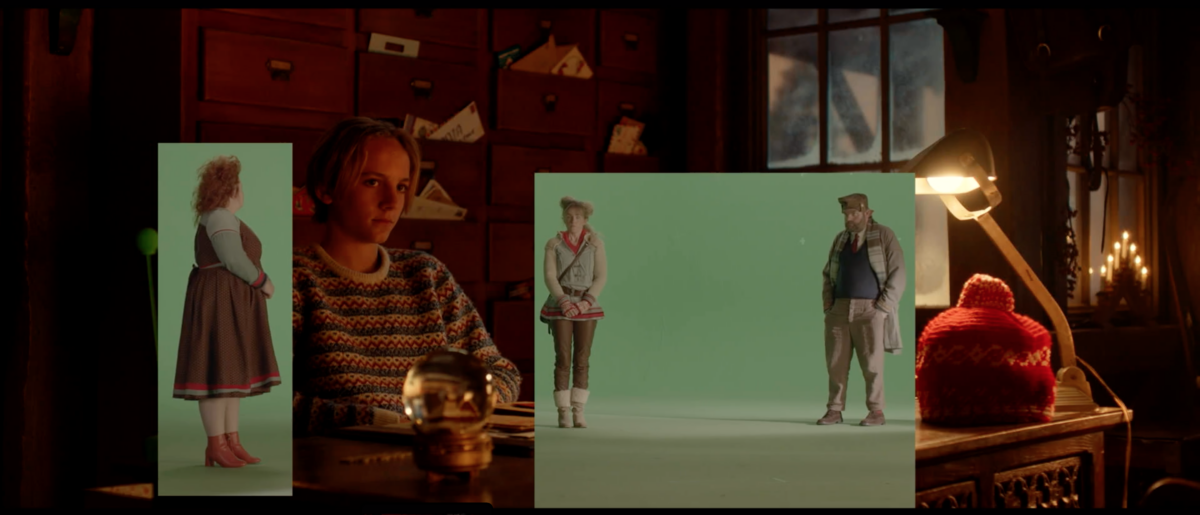
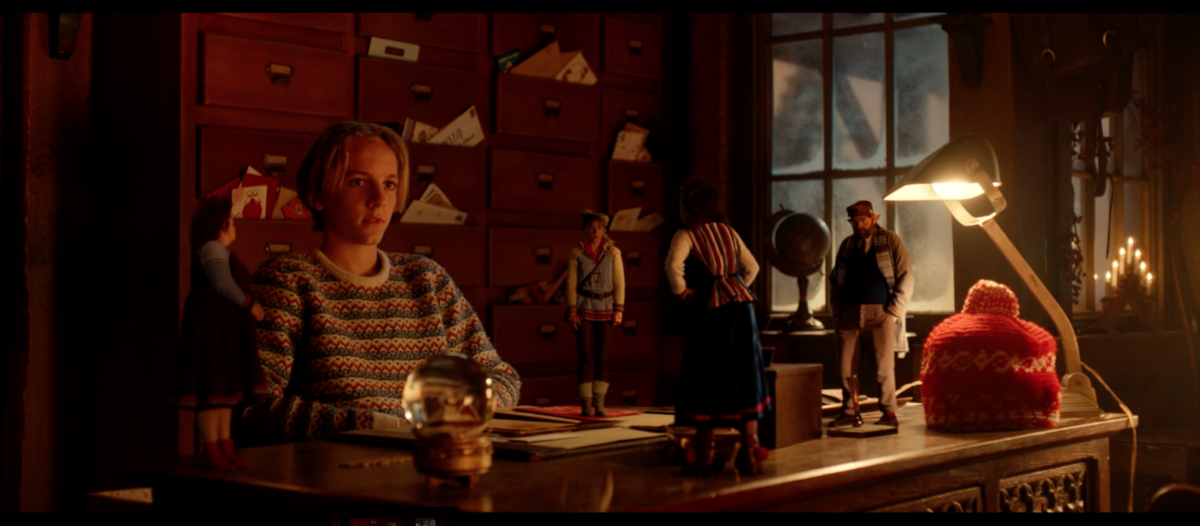
In the third film you digitally added characters into a scene when they couldn’t be present on set. How was this achieved?
In the third film the Claus family goes on holiday to a ski resort. We had to shoot at a real ski resort with real snow, but the snow would be gone in June when we scheduled to shoot these scenes. We went to Les Gets, a ski resort in the area of Morzine and even in April snow was melting rapidly. Some of the actors were not available at that early stage. We went with four main actors. Some scenes involved more actors. For all those scenes we had shot lists made before we left. So, we knew exactly what kind of shots we were going to need to make the story work, taking into account some of the absent actors, that we had to digitally add later on. We did it like we always did and we did it with stand-ins. They were in costume, so if we did an over the shoulder shot, we didn’t show their faces, only the shoulder. If we did a reverse shot, then we’d do it like we did with the mini-humans, with a clean plate. The actors that weren’t at the shoot we shot them at an indoor ski slope against green key. That’s how we did it. That was the most difficult thing I’ve done in my career as a DP. Duplicating those light conditions on an indoor stage with artificial light against a greenscreen is very challenging.
We had four shooting days in Les Gets. First day there was soft sun. Another day I had snow, sun and mist and lots of cloud. The third day only snow and the fourth day lots of
snow. Then you have to duplicate this kind of atmosphere to the indoor ski slope “studio”. If you see the result, I think as an experienced professional in the film business you will probably notice it. The public won’t notice it.
The post-production time on the films was just one and a half months to two months. We had to deliver by early October for Netflix. Editing is done while we shoot and finished a couple weeks later after we wrapped. VFX started once we finished the green key work, since most of those scenes are precut due to the VFX. I did the grading in the beginning, or mid September with Tom Mulder for 10 to 12 days, so there is little time for errors.

How were the Snow Globe effects captured in the second film?
In the first film there wasn’t a clear idea as to how the effect should be done or what it should look like. The actors have a custom-made globe with a little replica of Santa’s cabin inside, in their hands. They turn on rings to log the coordinates where they have to go to and finally have to push a button to activate the whole system. Stefan Rycken, our VFX supervisor came up with a proposal to make a king of sphere, with colours of the northern light and particles. When we shoot this (dis)appearance effect, we shoot the actual shot with the actor(s), even adding some movement like track in or out. Then shoot an empty plate without actors and an empty plate with extra light on the back ground so the VFX department can use this light to give the surrounding area some light glow coming from the light sphere effect. All these different plates were integrated to create this disappearing or appearing effect.
In the first film where Jules enters the “Hall of Gifts”, where all the toys are made and collected, there are no mini-humans flying around. Ruben, our director, said it would be lovely to have some extra mini-humans flying around, so Stefan took pictures of different extra’s dressed and clothed as “mini-humans” in different angles and positions. UMedia made them fly. All VFX were posted on Frame.io. It’s a programme we use to give comments and to approve all VFX shots. We even can draw on top of the image, so if we want to move, change or delete something, we can make a marker and make a note. It goes back and forth until the shot is approved by the director, VFX supervisor and myself.
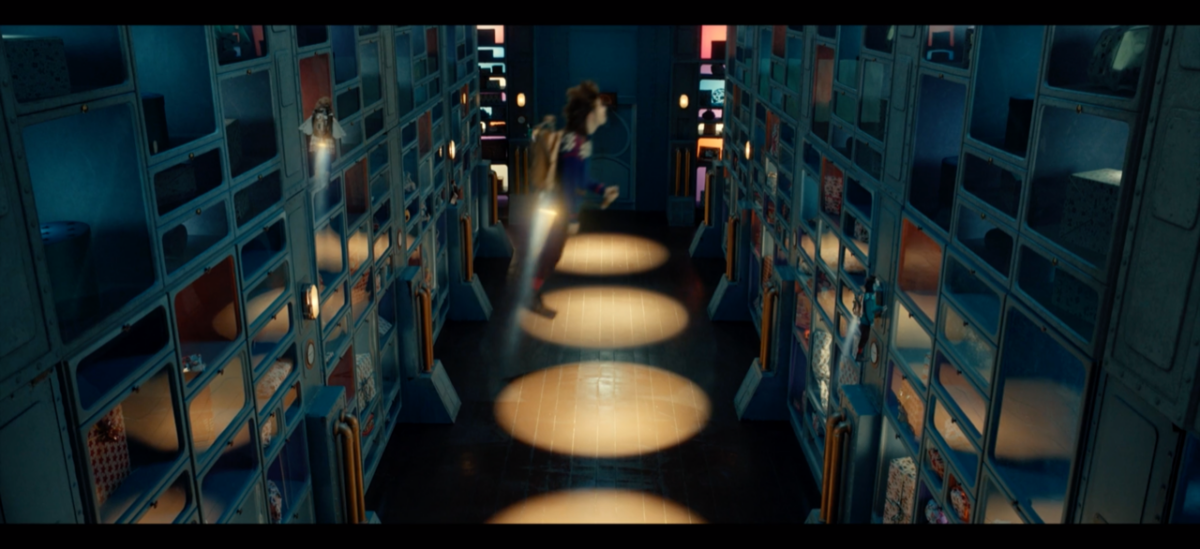
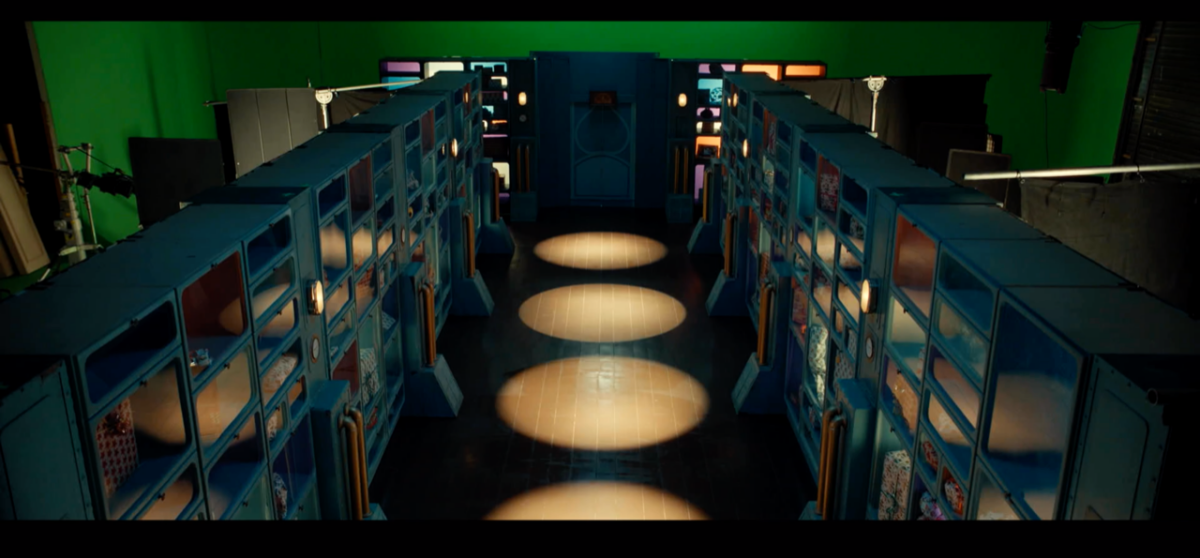
With every film we’re trying to push the limits. People are expecting different and better things than the previous film. A nice story: when we were shooting Claus 3 in the mountains in France, there was an English guy coming up the slope. He stood beside me and asked what we were doing. I told him we were shooting Claus 3. He said he loved the first film and he was a really big fan. That’s why we do it. We put a lot of effort into these films, in order to make them as good as we can. I’m particularly proud that with its modest budget we reach that many viewers worldwide. Same as some of the big budget films! Made in Flanders with a small team of very dedicated people: Tom Van Sand gaffer, Stijn Beckers key-grip, focus-puller Daniel Foeldes & Nathan Lederman, 2nd ac Thomas Vercauteren, Mireille Hoetelmans who’s a great make-up artist, Stefan Rycken VFX, Tom Mulder the wizard of colours, Nico Poedts editor, producer Anthony Biervelt and foremost our producer, director and writer Ruben Vandenborre.
